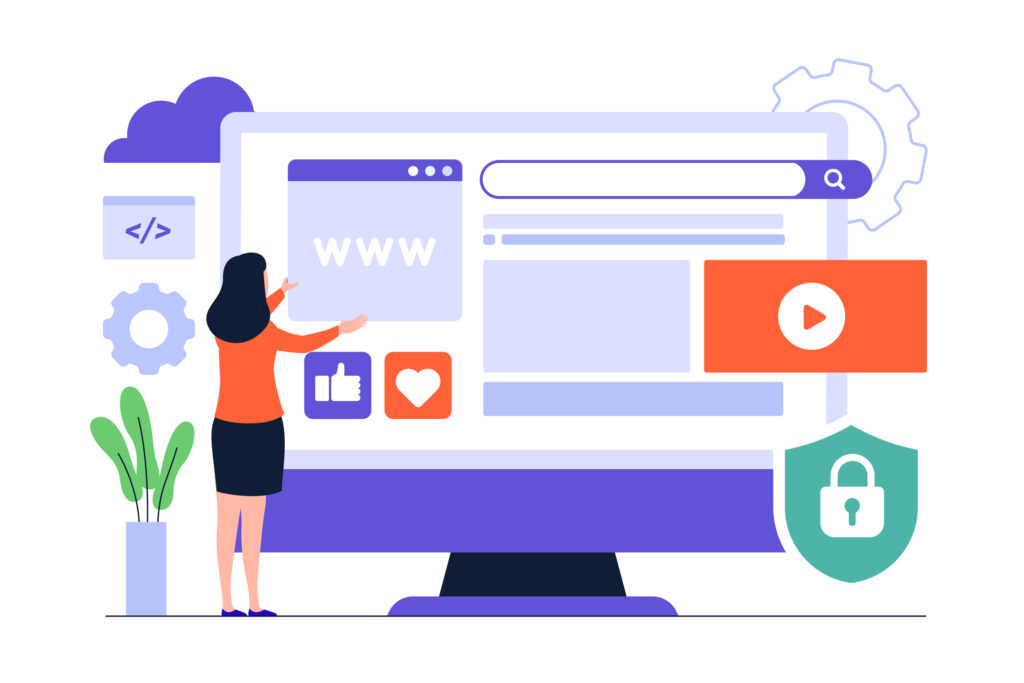The Impact of Web Accessibility on User Experience and SEO Rankings

In today’s fast-paced digital landscape, web accessibility has emerged as a fundamental pillar of website design and development. Its core mission is to ensure that all users, regardless of their abilities or disabilities, can seamlessly access and navigate a website. The ramifications of web accessibility extend beyond creating an inclusive online environment; they also profoundly influence user experience and search engine optimization (SEO) rankings. In this article, we will delve into the significance of web accessibility, its influence on user experience, and its pivotal role in shaping SEO rankings.
Understanding Web Accessibility
Web accessibility is a guiding principle that revolves around designing and developing websites in a manner that accommodates individuals with various disabilities or impairments. This encompasses a diverse range of conditions, such as visual, auditory, cognitive, or motor impairments. By adhering to web accessibility standards, websites aim to provide an equitable and barrier-free digital experience to all users.
The Impact on User Experience
At the core of web accessibility lies a profound impact on user experience. When a website is accessible, it transcends the barriers faced by individuals with disabilities, leading to an overall user-friendly interface for everyone. For instance, visually impaired users can rely on screen readers to audibly comprehend the content, while those with motor impairments can navigate through keyboard commands. By fostering inclusivity, accessible websites cultivate a positive user experience, encouraging visitors to remain engaged and interact more extensively with the content.
Influence on SEO Rankings
Beyond enhancing user experience, web accessibility bears a significant influence on SEO rankings – a critical factor in determining a website’s visibility and reach. Search engines, with Google at the forefront, emphasize user-centric experiences and prioritize websites that cater to a diverse audience. When a website embraces web accessibility, it aligns with the search engines’ core values of providing relevant, user-friendly, and accessible content.
- Improved Website Crawlability
Web accessibility significantly contributes to a website’s crawlability, making it easier for search engine bots to navigate and index the content effectively. Properly labeled images, descriptive headings, and structured data, all integral aspects of web accessibility, facilitate search engines in comprehending the website’s content and relevance.
- Reduced Bounce Rates
A key factor affecting SEO rankings is the bounce rate, wherein users leave a website quickly due to usability issues. With web accessibility in place, websites are more likely to witness lower bounce rates, as users encounter minimal hindrances during their visit. This, in turn, signals search engines that the website offers a positive user experience, potentially leading to improved rankings.
- Increased Dwell Time
Web accessibility positively impacts the time users spend on a website. When users can seamlessly access and comprehend the content, they tend to engage with it for a more extended period. Increased dwell time serves as a strong indicator of content relevance and value, subsequently contributing to higher SEO rankings.
- Mobile Responsiveness
Web accessibility and mobile responsiveness often go hand in hand. As mobile internet usage continues to surge, search engines prioritize websites that are accessible and perform well on mobile devices. By embracing web accessibility, websites can improve their chances of ranking higher in mobile search results.
- Backlinks and Social Shares
An accessible website has a higher likelihood of attracting backlinks and social shares. When users find a website valuable and easy to use, they are more inclined to link to it and share its content. These backlinks and social shares serve as essential SEO ranking factors.
- Importance of Color Contrast and Readability
Web Accessibility is of utmost importance in the digital realm, especially for users with visual impairments. Ensuring that all users can perceive the page content is heavily reliant on color contrast.
Furthermore, the use of simplified language, avoiding jargon, is crucial to making the content accessible to a broader audience. Incorporating lists and left-aligned text in the content further aids in comprehension.
- Significance of Image Alt Text in Web Accessibility
An essential aspect of Image Optimization revolves around incorporating alternative text to ensure ADA compliance for your website. Alt text provides a textual description of non-text content, catering specifically to visually-impaired individuals. As users navigate a webpage with the assistance of screen readers, this alternative text is read aloud, offering a comprehensive understanding of the image.
Moreover, alt text can prove helpful in situations where site visitors face slow Internet connections. It enables the interactive display of information and simultaneously enhances searchability and organic traffic.
Additionally, URL readability plays a significant role in enhancing the accessibility of your website.
Conclusion
In conclusion, web accessibility is not only a moral obligation to create an inclusive digital space but also a strategic approach to enhancing user experiences and SEO rankings. By adhering to web accessibility standards, websites can improve crawlability, reduce bounce rates, increase dwell time, optimize for mobile, and attract valuable backlinks and social shares. Embracing web accessibility is a powerful step towards fostering an equitable online environment while achieving better SEO performance amidst the ever-competitive digital landscape.


